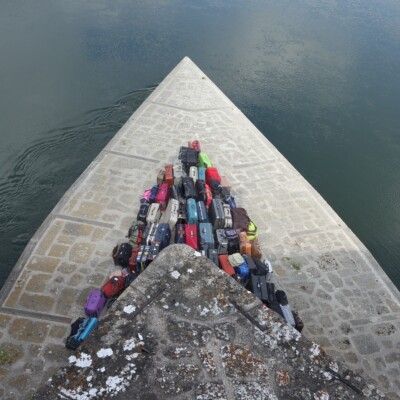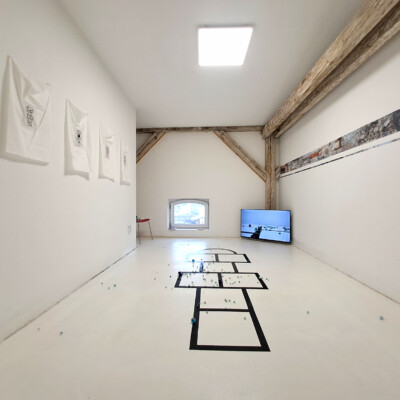SPACES OF TOGETHERNESS
Presentation of artistic research by Tonka Maleković
Sunday, May 25, 2025, from 5 p.m. to 6:30 p.m., SomaHut Festival

In her artistic work—often developed through interdisciplinary collaborations—visual artist Tonka Maleković explores the interaction between self-regulating and politically governed processes within a social context, with a particular focus on migration, public spaces, and play as an emancipatory practice. Her artistic focus is not on places of difference, but on places of merging, identification, and the creation of new, shared experiences and memories.
Since 2022, Maleković has collaborated with historian and researcher Sophia Freidhoff on projects such as Compositions of Flow, combining artistic and scientific methods with the aim of creating a more complex image of migration in contemporary society. In her new collaborative project Melting Plots, which originates from the video Little School, Maleković observes public space as a place of belonging and collective imagination.
Inspired by Stavros Stavrides’s theories on spaces of commons, she develops artistic strategies and interventions that activate the potential of urban spaces to generate new forms of togetherness and encounters based on solidarity.
The lecture, drawing on examples from her years-long artistic research, will focus on the motif of movement—at the intersection of personal experience and broader social context. It adopts a poetic-political approach to the theme of boundaries—whether national, administrative, regulatory, real, or perceived—and to the processes that dissolve and transform them.
Sunday, May 25, 2025, from 12:30 p.m. to 7 p.m.
WHITE FLAG / Little School (2023)
video, color, sound, loop

Connecting the theme of migration with the line of artistic research into play in public space as an emancipatory activity, various segments of the installation titled WHITE FLAG function as spatial thought maps that question the notion of boundaries—physical, administrative, national, and mental.
In the exhibited video sequence, two well-known games—beloved across generations and geographies—are juxtaposed. By contrasting their character within a visual-sound dialogue and altering the perspective enabled by the camera, a performative landscape of movement emerges.
Bodies that shift and are shifted cross the lines of division, alluding to movement as a consequence of complex social dynamics and emergent phenomena that arise from them. The language of play is used to inspire critical reflection on the legacy and legitimacy of established territories, while simultaneously opening a space for further sequences of the project, such as Melting Plots, in which play returns to its original role and becomes a tool for awakening spatial potentials and practices of togetherness.
